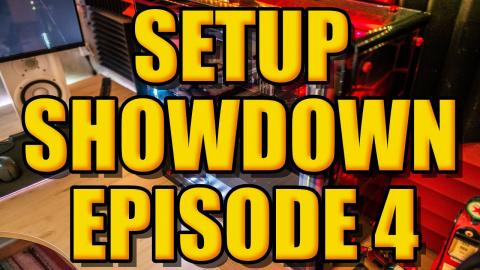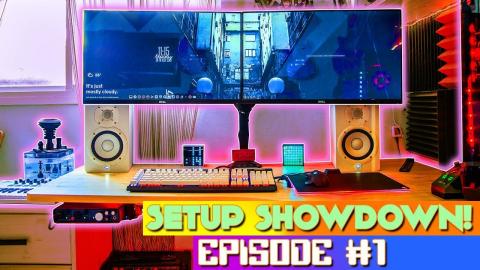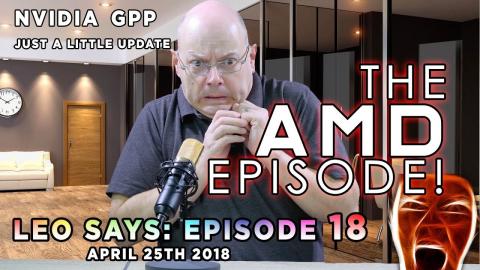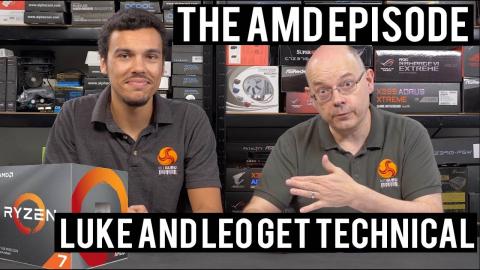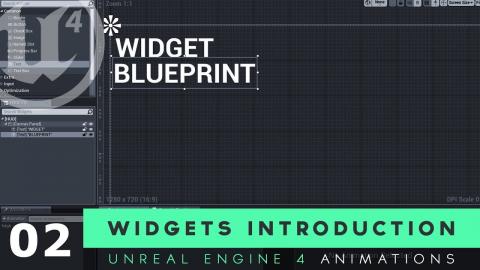The AMD EPISODE - Leo Says Episode 39
Description
It has been some time since we published a LEO says, but he is back with a bang after Computex 2019 with an AMD SPECIAL. See more over at www.kitguru.net
0:10 Introduction
0:28 Computex - the recap of 2019
3:18 We met Hardware Unboxed, Gamers Nexus and Gordon from PC World (NOT the UK store!)
5:00 The launches of AMD Zen 2, Ryzen 3000 and Navi are set for launch on 7th July
5:29 AMD X570 chipset is designed by AMD rather than ASMedia and MORE info!
6:55 X470 still useful for a lot of people
8:11 AMD Board details, pricing etc
11:30 New controllers for PCI Express Gen 4 M.2 SSD’s
13:42 Gigabyte with Infineon 16-phase VRM controller
14:41 MSI MEG X570 Godlike - ‘8-phase controller with 18-phase VRMs’ ?!
15:40 ASRock news / Mini ITX
17:00 AMD is no longer the budget option!
18:35 Zen 2 desktop Matisse details - cores, prices, advantages?
25:54 AMD EPYC Rome - clock speeds seem very modest indeed
27:39 Intel Cascade Lake-AP with dual dies on a single socket looks like a white elephant
29:04 AMD Navi Details emerged
31:23 Nvidia Super is coming soon
34:08 Hot chips Conference in August
34:39 Threadripper 3000 and other processor discussion
39:18 Intel - not dead yet - positive thoughts!
LEOS NOTES:
AMD X570 and Zen 2 were the centrepieces of Computex 2019.
The launches of AMD Zen 2, Ryzen 3000 and Navi are set for launch on 7th July.
AMD X570 chipset is designed by AMD rather than ASMedia. It runs at 11-15W and uses active fan cooling in almost every instance. B series chipsets will follow in time, very likely Q1 2020, rather than 2019.
If you are more interested in a 6-core or 8-core CPU and don’t need PCIe Gen4 storage or graphics you would be well advised to look at the existing X470 and B450 motherboards.
ASRock came up with AMD boards with Thunderbolt 3 and also a Mini-ITX AMD board with Intel cooler mounts. Phantom Gaming-ITX/TB3
Zen 2 desktop Matisse details
With Ryzen 9 3950X
https://www.amd.com/en/products/cpu/amd-ryzen-9-3950x and 3900X
https://www.amd.com/en/products/cpu/amd-ryzen-9-3900x
we see the core count climbing to 16- and 12- respectively. Prices are steep for desktop parts however we are in new territory and don’t have a reference point.
Moving down to the 8-core mainstream, what advantage has Ryzen 7 3800X gained from the move to 7nm? The price looks OK at USD$399 but what about clock speeds?
EPYC Rome clock speeds appear to be very low.
Reports have surfaced of 32-core parts with 1.7GHz Base and 2.4GHz Boost speeds.
64-core Rome is even slower with a Base speed of 1.4GHz that Boosts to 2.2GHz.
EPYC Rome looks like a significant move while Intel Cascade Lake-AP with dual dies on a single socket looks like a white elephant. There are two 32-core SKUs with 250W TDP and a 48-core model at 350W. SemiAccurate reports there is also a 56-core model that is rated at 400W.
AMD Next Horizon event at E3 followed after Computex.
Navi will launch as Radeon 5700 XT at USD$449 and 5700 at USD$379
The gold and black 5700 XT 50th Anniversary will sell for USD$499 direct from AMD
AMD Navi comes with RDNA architecture that updates GCN. All those millions of consoles means AMD cannot simply forget about legacy support.
Nvidia Super is coming soon
Existing RTX 2080, 2070 and 2060 are expected to get a price cut.
The Super versions are expected to be launched at the prices of the current RTX cards (say £300, £450 and £650) with more CUDA cores and faster memory.
RTX 2060/Super will still use TU106 and RTX 2090/Super will stick with TU104.
RTX 2070 is interesting as the regular GPU uses TU106 while the Super version will use TU104.
The big question is, what will be the new price for RTX 2070?
Navi looks unimpressive on paper and makes no attempt to compete on price so it’s function in life is to drive down Nvidia’s prices. In that respect, job done.
Threadripper 3000 has been quiet however we now hope to see a Q3 launch with up to 48 cores (8x 6-cores per CCX) and 4GHz, and possibly 64-cores.
Intel Xeon W-375X, will you ever see the retail light of day?
At present the biggest problem with Threadripper for workstations seems to be the Windows 10 scheduler. We don’t yet know the impact of the Windows 1903 update
Where on earth will those Threadripper parts sit in a world that includes a 16-core Ryzen 9, Intel HEDT parts and Threadripper that spans 12-, 16-, 24- and 32-cores.
Will the 16-core continue as a high end multiple PCI Express lane part?
If not, can AMD really support a platform with three or four SKUs?
A line-up of 2nd Gen 24-core and 32-core plus a 3rd Gen 48-core and maybe a 3rd Gen 64-core would be bizarre.
Each part would merit a specific motherboard and memory configuration and the spread of prices could be enormous.
It is tempting to give Intel a good kicking and to write them off as a dead company walking. Intel has a long list of problems but most laptops run on Intel and Apple uses their silicon too, including those brutally expensive Apple Mac Pros and iMac Pros.


